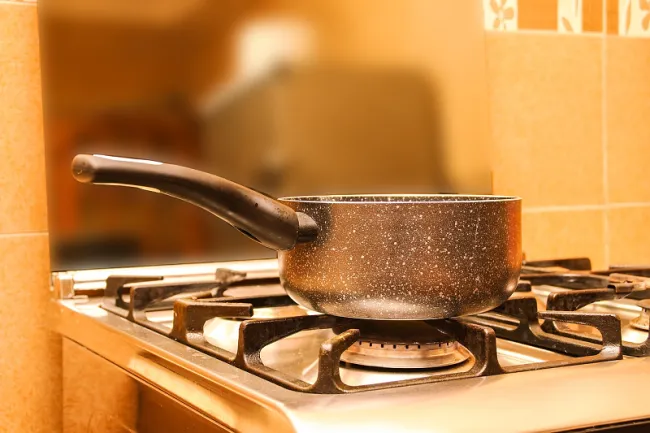Table members Ximena Schmidt Rivera, Sarah Bridle and Christian Reynolds have co-authored this paper, which finds that the cooking method used to prepare foods at home in the UK can account for up to 61% of total emission for some food types, and that emissions from cooking can be easily reduced. The paper is based on a survey of how UK consumers actually cook various foodstuffs, as opposed to recipe recommendations.

The figure below shows the typical proportion of emissions that derive from cooking, compared to all pre-consumption stages. Cooking emissions vary from 6% to 61% of total emissions, depending on the food type. For example, cooking potatoes produces 60% of their total emissions, while cooking eggs produce 9% of their total emissions.
Image: Figure 1, Frankowska et al. Total GHG emissions of various food items. Each bar indicates the share of a given item’s climate change impact associated with pre-consumption and cooking. Numbers in parentheses are the cooking impact as a percentage. Note that the vertical axes have different scales in each subfigure.
The paper also examines the emissions of cooking each food in different ways. For example, the figure below shows the impacts of cooking potatoes with a selection of alternative methods.Image: Figure 2b, Frankowska et al. Greenhouse gas emission of various cooking methods for potatoes.
The authors draw some general conclusions on the climate impact of different cooking methods:
- Ovens generally produce the highest cooking emissions due to their comparatively high energy demand and long cooking times required, while microwaves generally have the lowest impact. The authors suggest that precooking foods in the microwave would reduce the time they need in the oven without significantly affecting the taste and texture achieved by oven cooking.
- For reheating, defrosting and preparing vegetables, fruits, eggs and fish, using a microwave achieves similar results to boiling or steaming on the stovetop, with lower emissions.
- Electric grills use less energy than toasting or grilling in the oven (the paper does not calculate the environmental impacts of manufacturing an additional appliance).
- Using a pressure cooker - and in particular an electric pressure cooker as opposed to a stovetop one - substantially reduces cooking times and emissions, as does sous vide cooking (cooking food in a plastic bag in a heated water bath) and using a slow cooker (which achieves low emissions even with long cooking times). However, none of these three methods are commonly used in the UK. Sous vide cooking also uses plastic, which the authors point out will have environmental implications.
Abstract
Food is widely acknowledged as a major contributor to climate change but estimates of food-related greenhouse gas (GHG) emissions frequently consider supply chain stages only up to the farm gate or regional distribution centres. Here we estimate GHG emissions associated with different cooking methods and appliances in the UK. Data on current cooking practices were collected through a survey with more than 700 respondents. Our results reveal that home cooking accounts for as much as 61% of total emissions associated with specific foods, and that this can be substantially reduced through alternative, readily available cooking practices.
Reference
Frankowska, A., Rivera, X.S., Bridle, S., Kluczkovski, A.M.R.G., da Silva, J.T., Martins, C.A., Rauber, F., Levy, R.B., Cook, J. and Reynolds, C., 2020. Impacts of home cooking methods and appliances on the GHG emissions of food. Nature Food, 1(12), pp.787-791.
Read the full paper here. See also the Table explainer How can we reduce food-related greenhouse gas emissions?




Comments (0)